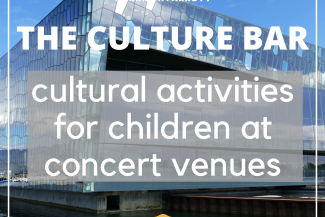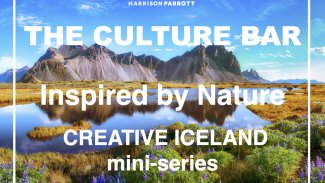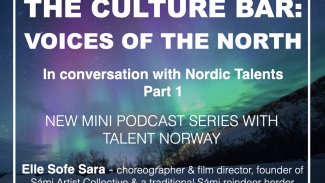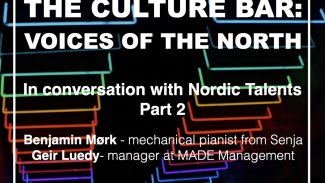The Culture Bar — Creative Iceland: Cultural Activities for Children at Concert Venues
16/6/2022

Creative Iceland mini-series
Welcome to Creative Iceland – a special The Culture Bar mini-podcast series focusing on the creative scene in Iceland. This series is hosted by Icelander Arna Margrét Jónsdóttir from HarrisonParrott. Arna will be speaking with fellow Icelanders about various topics related to the creative scene in Iceland.
For this episode we will explore cultural activities for children at concert venues, focusing on Harpa Concert Hall and Conference Centre. We will go over the importance of children’s culture, look into recent policy changes around children’s cultural activities at subsidised concert venues, and learn about cultural activities for, with and by children taking place at Harpa.
Svanhildur Konráðsdóttir is the Director of Harpa – Concert Hall and Conference Center in Reykjavík, Iceland. Svanhildur has over twenty years of successful experience in the cultural sector in Iceland and abroad. Since 2004, she served as a board member of the company that oversaw the construction and preparation of Harpa’s operations, then served on the board of directors from 2011 – 2016. She became the director of Harpa in 2017. In recent years, Svanhildur was the Director of Culture and Tourism of Reykjavík responsible for Reykjavík City’s cultural, artistic and tourism activities. This included the overseeing of operation of numerous cultural institutions and Visit Reykjavik — events and marketing office which she started. She headed the bid leading up to Reykjavík becoming a UNESCO City of Literature and also the Reykjavík Music City Program. Svanhildur’s background is in culture, journalism and media and she is the author of two books. She has worked for Reykjavík Arts Festival, Reykjavík European City of Culture 2000 and the National Broadcasting Service. She was the chairperson of UNICEF in Iceland for six years and has served on various other boards — now on the board of The Red Cross in Reykjavík. Among international art projects is the collaboration with Yoko Ono on IMAGINE PEACE TOWER in Videy island and the international promotion of Icelandic arts and culture through various channels and partners.
Ingibjörg Fríða Helgadóttir is a musician, creative workshop leader and children’s culture project manager at Harpa Concert Hall and Conference Centre. She has diverse education and experience in various fields of music and a degree in Creative Music Communication from the Iceland University of the Arts. In the last years, she has focused on children’s culture, creating, and hosting cultural podcasts for children and families at the Icelandic National Television and Radio (RÚV), teaching and performing music to and for children and leading music improv and composition workshops in various settings, for example in art festivals, music schools and concert venues such as Harpa. As a project manager, she supervises the children and family program in Harpa (which includes concerts, workshops, and other events) as well as the musical experimentation space in Harpa, Hljóðhimnar. The aim is to make Harpa familiar to every child, support culture for children, with children but most importantly culture by children.
The Culture Bar is a podcast series created by HarrisonParrott focussing on conversations in culture and the arts.
Find us on Spotify, iTunes, Google Podcasts, YouTube, Podbean, Deezer, Stitcher, Pocket Casts and all good podcatcher sites.
Use #theculturebar or follow us on Twitter @_TheCultureBar to keep up with our latest releases.
A special thank you to Robert Cochrane as the composer of the theme tune music, and Merlyn Thomas our editor.


